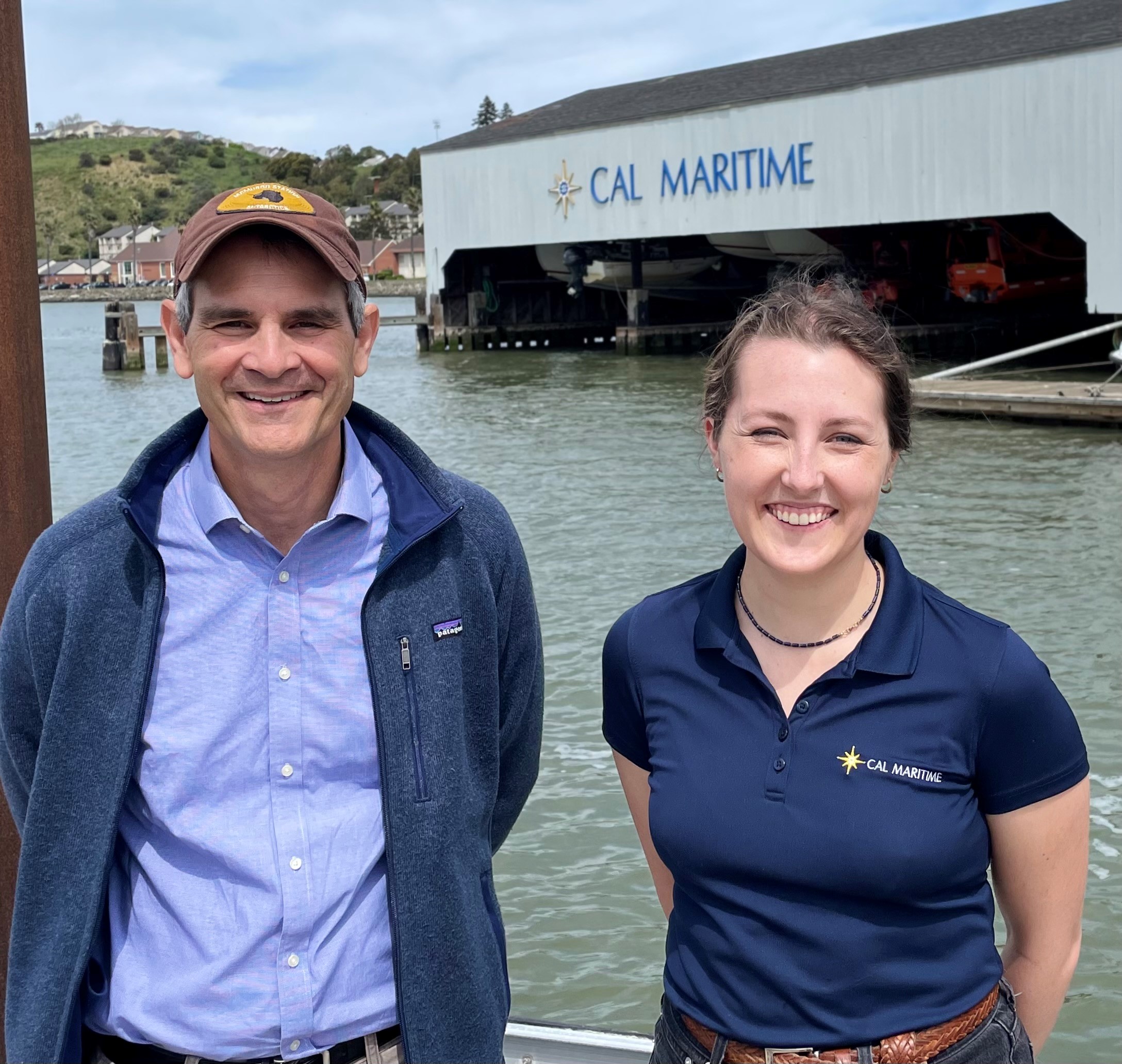 Alexandra (“Allie”) Johannsen (BS Oceanography) is working with Dr. Alex Parker on
a multi-investigator study of harmful algal blooms along the San Francisco Estuary
salinity gradient. The study is funded by NOAA’s Monitoring and Event Response for
Harmful Algal Bloom Research Program (MERHAB). Allie sampled for two HAB toxins regularly
between January 2024 and May 2025 at the Cal Maritime boat basin, a location between
the freshwater Delta and the Pacific Ocean – the mesohaline – or “middle salinity”.
The two HAB toxins, domoic acid and microcystins, are produced by marine diatoms and
freshwater cyanobacteria, respectively. As part of her work, she evaluated three different
methods for detecting HAB toxins including collecting discrete water samples, capturing
invertebrates that may have ingested toxins using passive Solid Phase Adsorption Toxin-
Tracking (SPATT) samplers. Her results confirmed that both algal toxins are regularly
present in the mesohaline portion of the San Francisco Estuary and suggest that toxins
are being transported from both upstream and seaward habitats into the mesohaline.
Additionally, the sampling approach employed appeared to be an important determinant
toxin detections, with analysis of invertebrate tissues yielding the highest toxin
concentration. Use of SPATTs also routinely resulted in toxin detections and revealed
seasonality in toxin presence. Discrete water sample analysis, the traditional method
for toxin detection, yielded the lowest toxin concentrations and had the most non-detections
when compared to SPATT and tissue samples. Allie shared her finding at the 2025 Interagency for the Ecological Program Workshop in Sacramento, CA during
March 2025.
Alexandra (“Allie”) Johannsen (BS Oceanography) is working with Dr. Alex Parker on
a multi-investigator study of harmful algal blooms along the San Francisco Estuary
salinity gradient. The study is funded by NOAA’s Monitoring and Event Response for
Harmful Algal Bloom Research Program (MERHAB). Allie sampled for two HAB toxins regularly
between January 2024 and May 2025 at the Cal Maritime boat basin, a location between
the freshwater Delta and the Pacific Ocean – the mesohaline – or “middle salinity”.
The two HAB toxins, domoic acid and microcystins, are produced by marine diatoms and
freshwater cyanobacteria, respectively. As part of her work, she evaluated three different
methods for detecting HAB toxins including collecting discrete water samples, capturing
invertebrates that may have ingested toxins using passive Solid Phase Adsorption Toxin-
Tracking (SPATT) samplers. Her results confirmed that both algal toxins are regularly
present in the mesohaline portion of the San Francisco Estuary and suggest that toxins
are being transported from both upstream and seaward habitats into the mesohaline.
Additionally, the sampling approach employed appeared to be an important determinant
toxin detections, with analysis of invertebrate tissues yielding the highest toxin
concentration. Use of SPATTs also routinely resulted in toxin detections and revealed
seasonality in toxin presence. Discrete water sample analysis, the traditional method
for toxin detection, yielded the lowest toxin concentrations and had the most non-detections
when compared to SPATT and tissue samples. Allie shared her finding at the 2025 Interagency for the Ecological Program Workshop in Sacramento, CA during
March 2025.
For Allie, this experience has not only given her hands on research experience, but has built her confidence as a scientist. In addition to lab and sampling experience, she has also had invaluable opportunities to network with other scientists in research conducting agencies.